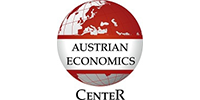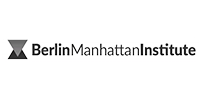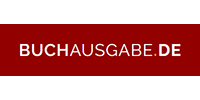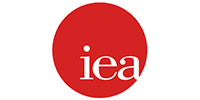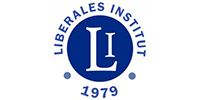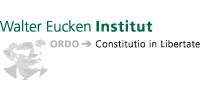Introduction
Governments and other public sector entities have borrowed up to the limit of their debt capacity, and, in the EU, its supranational entities have run up debts themselves. Public policy priorities for more spending abound, however. To meet them, new financing schemes emerge, which give the investors into them another flavour of ‘public sector risk’. This a further cost burden for businesses and individuals, in addition to the debt costs of government, other public sector entities and – in the EU – of EU supranationals.
‘General government’ debt
‘General government’ debt is the leading indicator of national debt, and refers to the debts of central, provincial, regional, and municipal government, and government agencies, in a particular country.
‘Public sector’ debt
The scope of ‘Public sector’ debt is wider, and embraces debts of public financial and non-financial corporations (which should include the debts of the central bank), and of social security and pension funds, if such exist and if they have debts.
The difference between ‘General government’ debt and ‘Public sector’ debt depends upon factors such as the degree of privatization, and the tendency of the government to act through quasi-autonomous entities rather than itself.
Limitations on total debt
Public borrowers are now near the ceiling of their ability to service their visible debts. The most obvious case is the Republic of France.
The demand evident on the part of governments for public spending does not abate, however, whether it be for the Net Zero transition or for economic stimulation, welfare, Covid recovery, or defence.
This is giving rise to new financing models that deliver to investors a flavour of ‘public sector risk’, without any impact on public sector balance sheets or on statements of revenue and expense.
Principles of new financing models
These new financing models extend what constitutes ‘public sector’ risk for investors to debt raised by private companies to pursue public policy objectives. The debt is placed into an entity that has guaranteed sales to businesses and individuals, but not necessarily to all of them in one country: it is not ‘government debt’ or ‘public sector debt’ as defined. Nevertheless the structure allows the lender to view their loan as being to a subset of the nation, and therefore to be ‘public sector risk’. Indeed, it is in the interests of policy-makers that lenders should believe that the loans are guaranteed by the government.
A UK water utility as a precursor of the new financing model
Thames Water is a perfect example of a privately-owned enterprise that is, at one and the same time, over-indebted and on the verge of bankruptcy, and capable of being construed by lenders as a form of ‘public sector risk’.
It fulfils a public policy objective and provides a statutory service. It has a de facto monopoly in its large and wealthy catchment area, within which the residents and businesses are obliged to buy from it, and banned from creating their own sources of supply.
On the back of what is tantamount to a tax-raising power on the wealthiest part of the UK, the owners were able to borrow a huge amount.
It cannot be allowed to go bankrupt and cause a risk of the interruption of the supply of drinking water, fresh water, and waste water services. In that respect it has significant leverage over the government and over other public bodies to obtain financial support.
Thames Water, up until its privatization, ranked as a ‘public corporation’, and so its debts formed part of the UK ‘public sector’ debt. It is only one step further to imagine companies built around the same parameters but which have never been formally part of the ‘public sector’.
EU green energy projects funded via InvestEU
InvestEU, mounted through the EU’s self-styled climate bank the European Investment Bank Group, supports schemes that fulfil public policy objectives, notably for the Net Zero transition.
The schemes are privately owned, but with little shareholders’ equity in them: in general they are over 95% debt-funded.
The European Investment Bank (EIB) and its subsidiary the European Investment Fund (EIF) inject loans and guarantees into the higher-risk portions of a scheme’s balance sheet, enabling the scheme to attract a large amount of other debt finance as long as certain parameters are met.
The main parameter is the assurance that investors’ interest and capital payments will be made in full and on time. The assurance derives from the scheme’s being licenced, by public authorities in a given member state, to produce financial claims on a spread of EU businesses and individuals that they cannot escape from paying. This acts alike a tax-raising power. The wider the spread of EU businesses and individuals backing the financial claim, the more the claim resembles a direct one on the member state itself, and mimics the member state’s tax-raising power. Investors are then entitled to view and account for their claim as if it were ‘public sector risk’.
How the high level of assurance for investors is furnished
A scheme for the generation and supply of green energy might be structured in various ways. We can consider this is relation to Adhara Solar SLU, a scheme part-funded by InvestEU set up in Spain for ‘decarbonised energy networks and generation’, where the state-owned Red Electrica functions as the national electricity distribution system and there are numerous regional suppliers who sell to consumers.1 Adhara and its peer group could have any one of these arrangements in place or variations on them:
- Adhara has a contract with a regional supplier to sell its electricity at a guaranteed minimum price. The regional supplier may be a monopoly supplier to a given province or region, such that sales of product to businesses and individuals located within the province or region flow through to the scheme and enable Adhara’s debt service;
- Adhara has the right to sell unlimited amounts of its product into the Red Electrica but at the then-current price-per-unit. On top of that Adhara has a top-up agreement with a public body, to make up the price of the sales to a given price-per-unit;
- Adhara has the right to sell its product – as much as businesses and individuals consume – into the Red Electrica and on to the regional supplier for a given region or province at a price-per-unit linked to Adhara’s cost-of-production, regardless of the price paid by businesses and individuals located in other regions or provinces.
Investors’ credit risk is always on EU businesses and individuals
The EU energy consumers (businesses and individuals) support these schemes in several ways:
- they backstop the EIB/EIF, either through the EU’s guarantees for losses incurred by EIB/EIF on InvestEU, or through the EIB Group’s ability to call for more capital from member states as and when they require it;
- they have to buy from the state-owned utility;
- they have to backstop the state-owned utility if it should get into financial trouble;
- they have to buy from the electricity supply system at the then-current price-per-unit;
- they will have to supply the resources – through charges or taxes – to the public body that signs the top-up agreement;
- they pay an inflated price for their energy supply and, because they live in the designated region or province, they cannot buy elsewhere.
The loans into the project fall outside the definitions of ‘government debt’ and ‘public sector debt’.
One way or another, though, the lenders have a line of recourse – and sometimes more than one line – to the same group of legal persons that stand behind the debts of the government and the public sector. When lenders can point to a source of repayment which is this wide spread of types of entity, they can construe their credit risk as a form of ‘public sector risk’.
Attraction for authorities
The attraction for authorities is that neither the debt nor the debt service payments run through the public accounts. Public policy objectives are fulfilled, but without the measures of the public finances being affected.
The trend to disguise debt service payments as usage charges, rentals and so on, goes hand-in-hand with disguising the debt itself as shadow debt: neither pass through the public accounts – neither the balance sheet nor the P&L – but they both show an expansion of the state’s involvement in the economy.
Summary and conclusions
Public spending must continue to increase apparently, in order to fulfil public policy objectives, as defined by politicians. The fact that public debt – both ‘General government debt’ and ‘Public sector debt’ – is near its ceiling, and that the scope and rates of taxation are very high, is simply an obstacle to be worked around.
The financiers already have the answer: schemes that create irrevocable obligations for businesses and consumers but where neither the enabling debt nor the debt service pass through the public accounts.
It is as if this does not place an extra financial burden on businesses and consumers, and as if the resulting payments have no economic impact, for example in diverting money away from innovation, investment, and consumer spending.
1 investeu-final-recipients-beneficiaries-en for 2024 p.5 accessed on 18 August 2025 through https://www.eib.org/en/products/mandates-partnerships/investeu/index
This material was originally published here: https://en.irefeurope.org/publications/online-articles/article/taxpayers-to-be-burdened-with-further-obligations-under-a-new-way-of-creating-public-debt/



